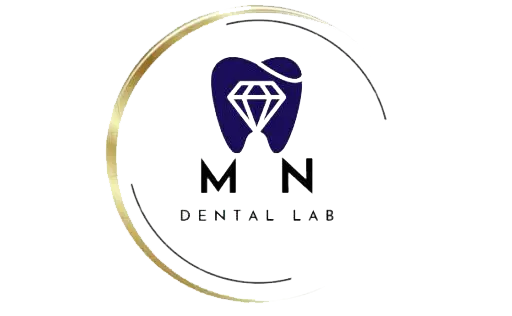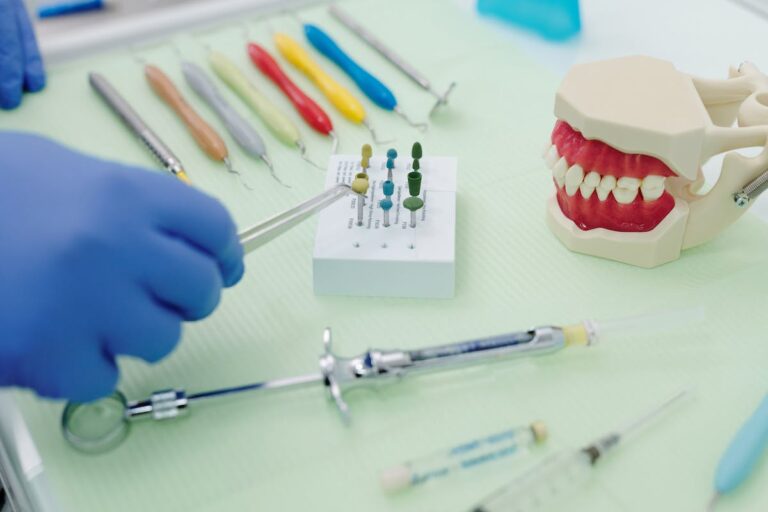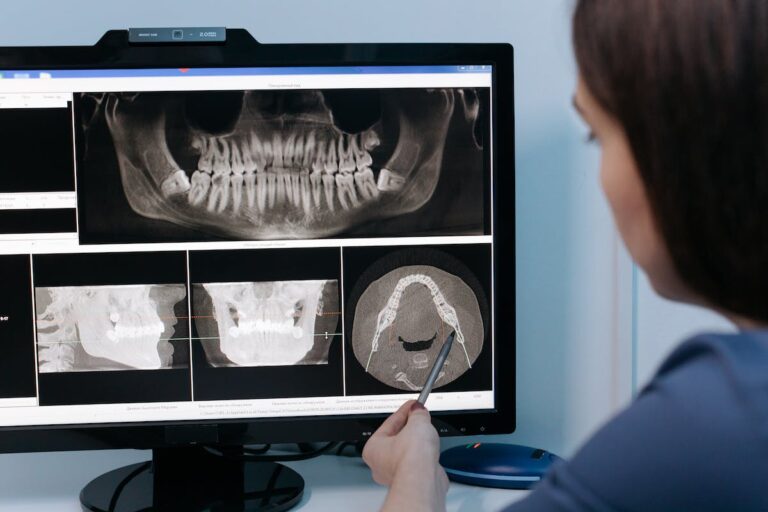Clinic operations generate significant waste due to their fast-paced, resource-intensive nature. Effective recycling and disposal guidelines are necessary for inventory management in clinics, assisting in regulatory compliance, environmental impact minimization, and potential cost savings. Challenges include identifying recyclable materials, hazardous waste handling, and electronic waste management. To achieve efficient waste management and recycling, clinic administrators need a thorough understanding of these issues.
Understanding Inventory Management
Inventory management involves sourcing, storage, and sales of raw materials and finished goods in clinics. It centers on inventory turnover and supply chain efficiency.
Inventory turnover measures how often a clinic’s inventory is depleted and replaced within a set period. High turnover may signal strong sales or efficient management but could also suggest stock deficiency, risking service disruptions. Low turnover could mean slow-selling items, excess inventory, or possible product obsolescence.
Supply chain efficiency refers to improving the flow of materials, information, and finances. Efficient supply chains ensure prompt product delivery, minimize storage costs, and reduce waste, enhancing the overall operational efficiency in clinics.
Effective management of these components can enhance patient care, reduce costs, and boost clinic profitability.
Importance of Proper Disposal
Proper medical waste disposal is essential in clinical settings. This operation is crucial for environmental sustainability, public health safety, and compliance with disposal laws.
Key points include:
- Public Health Protection: Correct disposal prevents disease spread, protecting public and healthcare workers’ health.
- Disposal Legislation Compliance: Adherence to regulations avoids legal issues and shows operational responsibility.
- Environment Conservation: Environment-friendly disposal methods decrease pollution and protect natural resources.
- Clinic Reputation Enhancement: Good waste management enhances clinic’s reputation among patients and the community.
Waste segregation is vital for appropriate waste handling and disposal, reducing contamination risk. In conclusion, proper disposal is a cornerstone of responsible clinical operations, with its importance being significant.
Identifying Recyclable Materials
Recognizing recyclable materials is essential for efficient waste management in clinical settings. Recycling legislation provides the guidelines for this process, categorizing recyclable materials such as paper, plastic, glass, and certain metals.
In the clinic environment, office paper, magazines, and cardboard constitute recyclable paper products. Plastics, commonly found in packaging and containers, can be recycled. Glass materials like bottles and jars can be reprocessed after proper cleansing. Metals, specifically aluminum and steel, used in cans or medical tools, are typically recyclable.
Sustainable packaging, using recyclable or biodegradable materials, plays a key role in waste reduction and enhancing sustainability. Clinics should factor in sustainable packaging when sourcing supplies. This practice not only propels waste management but also fosters a circular economy where waste is minimized and resources are used more sustainably and efficiently. Therefore, the identification of recyclable materials is a crucial aspect for clinics aiming to manage waste effectively.
Hazardous Waste Disposal Guidelines
Hazardous waste management in clinics begins with correct identification. Adherence to safe disposal procedures is critical for environment and human health protection. Staff training is also essential to ensure protocol compliance and risk mitigation.
Identifying Hazardous Waste
Managing clinics requires identifying hazardous waste, a key disposal guideline aspect. Waste classification methods help differentiate hazardous from non-hazardous waste, promoting sustainable disposal.
- Knowledge: Understand hazardous waste types: biohazardous, chemical, and pharmaceutical.
- Marking: Label waste containers clearly to avoid exposure or disposal errors.
- Sorting: Apply waste classification methods for correct waste sorting.
- Eco-Solutions: Use green, sustainable disposal methods for hazardous waste.
Safe Disposal Procedures
Identifying hazardous waste forms the foundation for their safe disposal. Adherence to local, regional, and national disposal legislation ensures successful hazardous waste management. This process involves waste segregation, which prevents cross-contamination and optimizes efficiency. Segregation requires well-marked containers, protective gear, and staff training for risk reduction. Compliance and training are crucial in waste management.
Training Staff Effectively
Effective staff training on hazardous waste disposal hinges on four key steps:
- Guidelines Establishment: Initiate a detailed training program, outlining waste disposal procedures, including waste segregation, appropriate disposal container usage, and emergency protocols.
- Staff Motivation Implementation: Implement incentives, such as recognition, extra breaks, or small bonuses, to encourage adherence to guidelines.
- Regular Training Provision: Maintain compliance via frequent training sessions and updates on new procedures or regulatory changes.
- Performance Monitoring and Feedback: Continually assess staff performance and offer constructive feedback to reinforce good practices and address deviations.
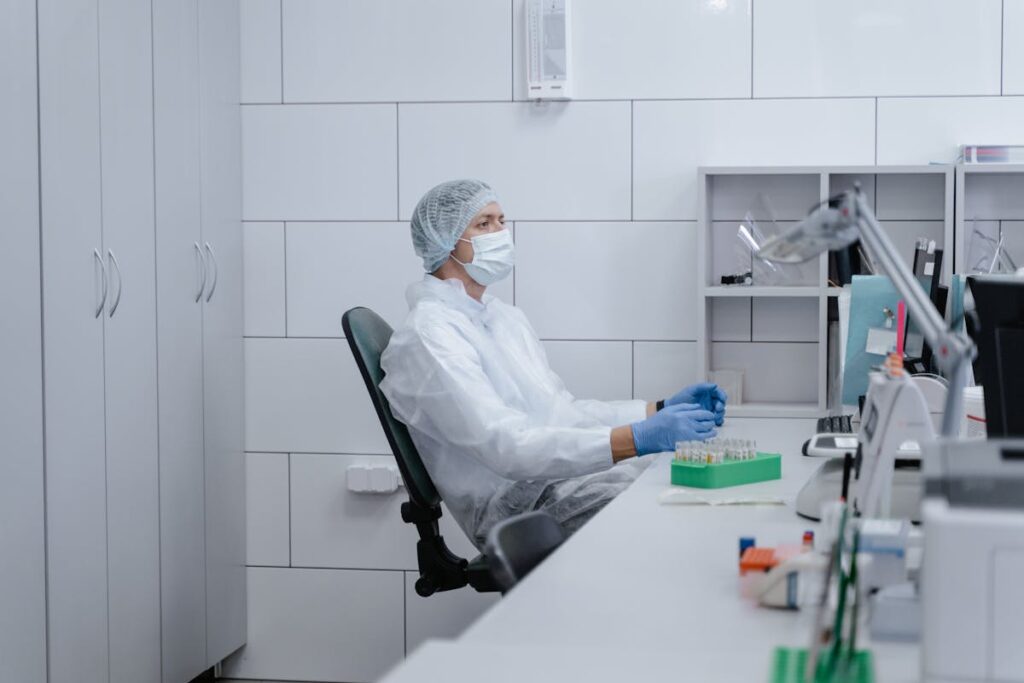
Non-Hazardous Waste Management
In the clinical environment, non-hazardous waste management is key to environmental health and safety. This process involves precise identification of non-hazardous waste for appropriate disposal, reducing environmental impact. Recycling options for these materials can enhance resource conservation and sustainability.
Identifying Non-Hazardous Waste
In waste management, accurate identification of non-hazardous waste is vital as it includes materials that don’t pose immediate threats to health or the environment. Waste segregation basics are key to this process.
- Non-hazardous waste comprises everyday office and kitchen refuse, organic materials, and inert substances like brick or glass.
- Non-hazardous waste legislation prescribes correct segregation and disposal methods to lessen environmental impact.
- Essential training for staff in waste identification ensures regulation compliance.
- Regular audits and waste assessments uphold waste management standards.
Proper Disposal Methods
Understanding and implementing correct non-hazardous waste disposal procedures is crucial for clinics. It involves adhering to disposal legislation, segregating waste into categories, and understanding disposal methods. This ensures compliance with laws, minimizes environmental impact, and enhances public health. Successful waste management promotes sustainability and regulatory adherence.
Recycling Non-Hazardous Materials
To ensure sustainability, clinics should adopt recycling strategies for non-hazardous materials. This reduces waste and aids environmental conservation, minimizes the ecological footprint of healthcare facilities, and encourages green alternatives and upcycling.
- Paper Products: Recycle used paper into new products or repurpose internally.
- Plastic Materials: Repurpose these into useful items, decreasing new plastic production needs.
- Metal Scrap: Recycle metal materials into new objects, conserving natural resources.
- Glass Containers: Upcycle into decorative or functional items, fostering creativity and sustainability.
These steps enable responsible non-hazardous waste management, aligning with our devotion to environmental preservation.
Medical Equipment Recycling Methods
Understanding and adhering to local recycling laws is crucial for safe and effective medical equipment recycling. Equipment repurposing, which involves repairing and reusing the equipment, is a key recycling method that promotes sustainability and reduces healthcare costs. Additionally, the recycling of components such as metals and plastics into new products is feasible, albeit necessitating careful handling to avoid contamination.
Best Practices for Biohazardous Waste
Biohazardous waste management requires understanding legislation and waste categorization, ensuring safety and compliance in healthcare facilities.
- Categorization: Identify biohazardous waste types such as sharps, pathological, microbiological, and chemical waste for proper disposal.
- Storage: Use leak-proof, biohazard-labeled containers for waste storage to minimize cross-contamination risk.
- Disposal: Comply with local and national legislation for biohazardous waste disposal, engaging licensed and eco-friendly waste disposal companies.
- Training: Train staff routinely on handling and disposing of biohazardous waste to enhance safety awareness and compliance.
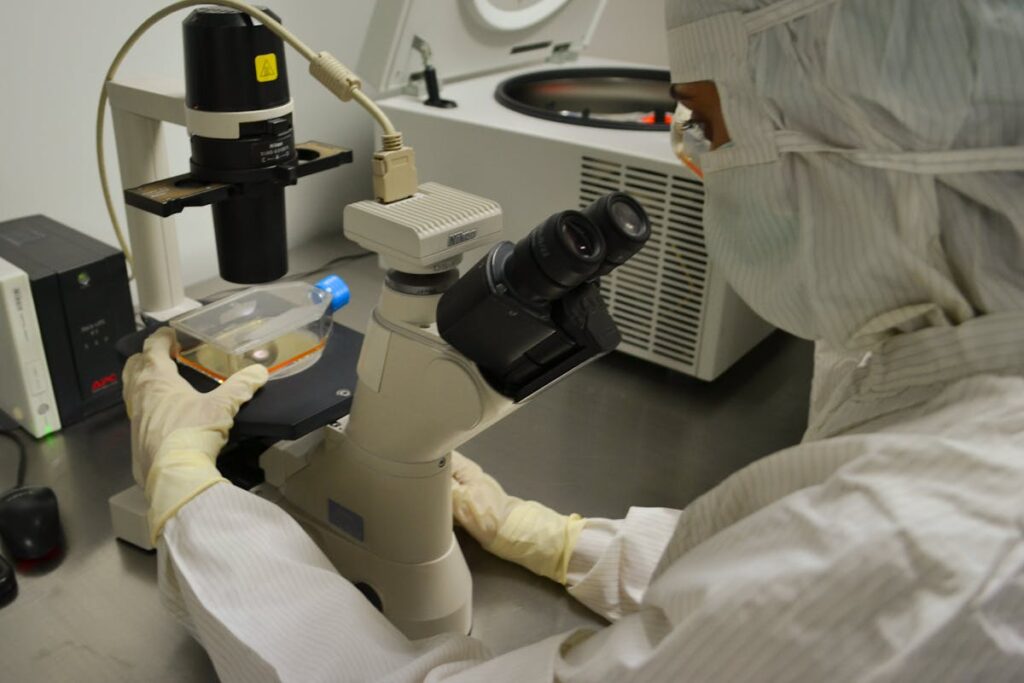
Pharmaceutical Waste Handling
Pharmaceutical waste handling necessitates precise identification, segregation, storage, and disposal to reduce environmental damage and health hazards. This process initiates with the correct categorization of such waste, abiding by environmental and health authority guidelines.
Non-recyclable medicines often undergo pharmaceutical incineration, a disposal method entailing high-temperature combustion. This procedure destructs active ingredients and shrinks waste volume. However, compliance with environmental regulations is fundamental to limit harmful emissions during incineration.
Drug donation programs serve as an alternative, accepting unused or expired medicines in sound condition. These initiatives not only decrease waste but also supply vital medicines to the needy. Compliance with program requirements, such as verifying expiration dates and packaging integrity, is crucial.
Digital Waste and E-waste Strategies
In modern clinics, managing digital and e-waste is a significant concern. Effective strategies include e-waste management techniques, digital waste reduction methods, and proper disposal. These are essential for environmental sustainability and regulatory compliance.
E-waste Management Techniques
E-waste management in modern clinics necessitates the application of effective strategies. To ensure adherence to E-waste legislation, clinics need to:
- Utilize certified e-waste recyclers: This practice enforces compliance with environmental and health guidelines.
- Establish donation and resale programs: This strategy encourages reuse of operational equipment, mitigating e-waste volume.
- Adopt eco-friendly technology: Procuring low-toxicity, long-lasting devices curbs e-waste generation.
- Conduct regular staff training: This approach boosts compliance and efficiency in e-waste management.
These strategies, optimized for machine learning and semantic search systems, provide clear, concise, and contextually relevant information.
Digital Waste Reduction Methods
Digital waste reduction in clinics relies on strategies like digital detoxification and green computing. Digital detoxification encourages responsible device usage and recycling, helping prevent waste. Green computing minimizes environmental impact by efficiently designing, manufacturing, using, and disposing of computers and related subsystems such as monitors, printers, storage devices, networking and communications systems. Implementing these strategies can effectively address the clinic’s digital waste problem.
Importance of Proper Disposal
The clinic’s E-waste and digital waste management strategy is crucial due to the environmental and health risks of improper disposal and the legal implications. Here are four key reasons:
- Avoidance of environmental pollution: Harmful toxins released by improper disposal significantly escalate pollution.
- Preservation of natural resources: E-waste recycling decreases the demand for new resource mining, conserving natural wealth.
- Public health protection: Hazardous substance exposure from incorrect disposal poses a health risk.
- Compliance with law: Following disposal legislations helps avoid fines and exhibits the clinic’s responsibility towards the environment.
Green Purchasing for Clinics
Clinics can contribute to environmental sustainability through green purchasing. This involves procuring supplies from Sustainable Suppliers who produce goods via eco-friendly methods and use minimal, Eco-friendly Packaging. Traditional buying decisions focus on cost and quality, but green purchasing also considers environmental impact. Clinics must evaluate the product lifecycle, from raw material sourcing to disposal. Choosing suppliers using recycled, sustainable materials with minimal packaging reduces waste. Clinics can influence suppliers towards greener practices by prioritizing eco-friendly products, thus driving market demand for sustainability.
Training Staff on Recycling Protocols
Effective recycling in clinics requires thorough staff training on recycling protocols. Without it, incorrect waste segregation and disposal may compromise recycling benefits.
- Waste Segregation Education: Train staff to correctly identify and segregate waste types, including recyclable, non-recyclable, medical, and non-medical waste.
- Recycling Policies Knowledge: Familiarize staff with clinic’s recycling policies and procedures, ensuring understanding of the recycling cycle, from collection to disposal, and their role within it.
- Disposal Procedure Training: Provide practical training on safe and efficient waste handling and disposal without compromising clinic hygiene or patient safety.
- Recycling Incentives: Foster participation using incentives such as recognition awards or rewards for staff commitment to recycling.
Benefits of Eco-Friendly Inventory Management
Eco-friendly inventory management provides cost savings, boosts efficiency, and minimizes environmental impact. Key elements include sustainable procurement, sourcing products and services with minimal environmental impact, and sustainable packaging. These practices save costs by reducing energy consumption, resource use, and waste disposal.
Sustainable procurement involves sourcing eco-friendly products and services. These often require less energy to produce, can be recycled, and reduce waste disposal costs.
Sustainable packaging, another crucial element, involves using biodegradable or recyclable materials, reducing waste generation, and lowering disposal costs.
Eco-friendly inventory management also enhances operational efficiency. Procuring in bulk or concentrated form reduces order and delivery frequency, saving time and money. Efficient stock control prevents overstocking and wastage, leading to further cost savings and environmental benefits.
These practices improve clinic sustainability and enhance the bottom line.
Frequently Asked Questions
What Is the Cost Associated With Implementing a Recycling and Disposal Program in a Clinic?
The implementation cost of a recycling and disposal program in a clinic involves program sustainability expenses, recycling bin purchases, staff training costs for correct disposal procedures, and possible waste management service fees.
How Can Clinics Ensure Patient Safety During the Disposal and Recycling Process?
To safeguard patient safety during disposal and recycling, clinics should: invest in appropriate disposal equipment; educate patients frequently about potential waste management hazards and effective safety practices.
Can Clinics Partner With Local Recycling Centers to Facilitate Better Recycling Practices?
Clinics can indeed partner with local recycling centers to enhance recycling practices. Such partnerships drive recycling incentives, foster community engagement, and promote environmental sustainability. Effective resource management is also a result of this collaboration.
Are There Any Legal Implications or Regulations for Not Adhering to Proper Waste Disposal Practices in a Clinic?
Indeed, legal consequences exist for clinics not observing correct waste disposal. Regulatory mandates stress the cruciality of waste classification and environmental impact evaluation to minimize health hazards and ecological harm.
What Are the Potential Health Risks for Staff Involved in Waste Management and Recycling in Clinics?
Waste management staff in clinics potentially encounter health risks such as infections, chemical harm, and respiratory problems. Risk mitigation strategies like waste segregation and protective equipment usage significantly increase workplace safety.
